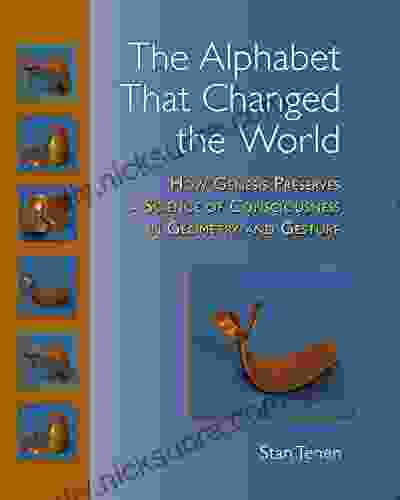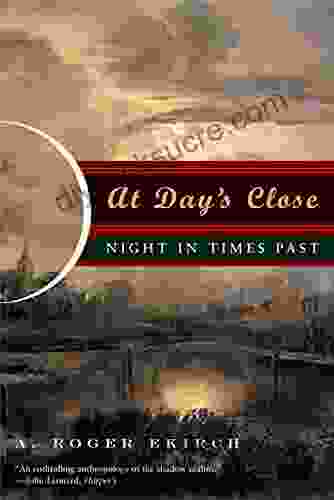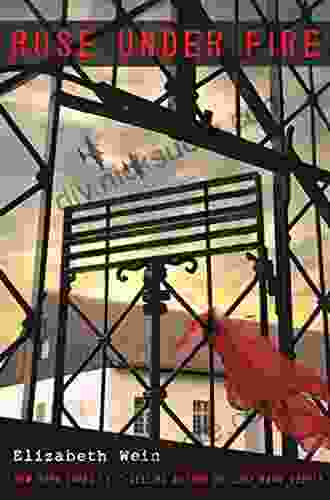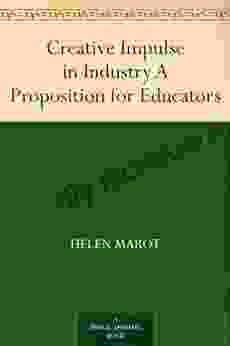Dancing in the Mosque: A Controversial Tapestry of Sacred Spaces and Artistic Expression

The sanctity of a mosque, a place of worship for Muslims, holds a deep spiritual significance. However, the act of dancing within these hallowed halls has sparked a heated debate that has reverberated through the corridors of faith and art.
This article delves into the complex world of dancing in mosques, exploring the historical roots, cultural contexts, and contemporary perspectives surrounding this controversial art form. We will navigate the intersection of religion, spirituality, and artistic expression, examining the varying viewpoints and exploring the transformative power of dance.
4.5 out of 5
| Language | : | English |
| File size | : | 5061 KB |
| Text-to-Speech | : | Enabled |
| Screen Reader | : | Supported |
| Enhanced typesetting | : | Enabled |
| Word Wise | : | Enabled |
| Print length | : | 225 pages |
Historical Roots and Cultural Context
The practice of dancing in religious contexts has a long history in many cultures around the world. In pre-Islamic Arabia, dance played a prominent role in rituals and celebrations.
After the advent of Islam, dancing gradually became less common in mosques, as worship practices shifted towards more formal and reverent forms. However, in certain Sufi traditions, such as the Mevlevi Order in Turkey, dance remained an integral part of spiritual practices, symbolizing the whirling motion of the planets around the sun.
Artistic Reinterpretation in Contemporary Art
In recent years, contemporary artists have re-examined the concept of dancing in mosques, using it as a platform for artistic expression and social commentary.
One notable example is the work of Palestinian-American artist Mona Hatoum, whose performance "The Negotiating Table" (2002) involved dancing on a table covered in religious texts. Another is choreographer Akram Khan's "Bahok" (2010),which combines elements of Sufi whirling with contemporary dance.
Controversy and Cultural Sensitivity
These artistic interpretations have ignited a heated debate, with critics arguing that dancing in mosques is disrespectful to the sanctity of religious spaces. Some Muslim leaders have denounced such performances as blasphemous, while others have expressed concerns about the appropriation of Islamic symbols.
Cultural sensitivity is paramount in navigating this controversy. It is essential to understand the diverse perspectives within Muslim communities and to approach the issue with respect for both artistic freedom and religious traditions.
Dance as Worship and Spiritual Expression
For some, dancing in mosques is a form of worship, a way to connect with the divine through physical movement. They argue that dance can express devotion, joy, and surrender, and that it can create a sense of sacred communion.
Sufi dancers, for example, view their whirling as a form of dhikr (remembrance of God) and a way to transcend the physical realm. Their performances are not seen as mere entertainment, but as a profound spiritual experience.
Challenging Artistic Taboos and Redefining Sacred Spaces
Contemporary artists who engage with the theme of dancing in mosques often challenge artistic taboos and redefine the concept of sacred spaces.
By performing in sacred contexts, they question the boundaries between art and religion, and provoke a dialogue about the nature of worship and spirituality. Their works can be seen as a call for greater inclusivity and a recognition of the diversity of religious expression.
The debate surrounding dancing in mosques is a complex and multifaceted one, reflecting the intersection of faith, art, and cultural identity. As we navigate this controversy, it is important to approach it with sensitivity and an open mind.
By understanding the historical roots, cultural contexts, and contemporary perspectives surrounding this art form, we can foster a dialogue that respects both artistic freedom and religious traditions. Ultimately, the question of whether dancing in mosques is appropriate or not is one that each individual must answer for themselves.
4.5 out of 5
| Language | : | English |
| File size | : | 5061 KB |
| Text-to-Speech | : | Enabled |
| Screen Reader | : | Supported |
| Enhanced typesetting | : | Enabled |
| Word Wise | : | Enabled |
| Print length | : | 225 pages |
Do you want to contribute by writing guest posts on this blog?
Please contact us and send us a resume of previous articles that you have written.
 Fiction
Fiction Non Fiction
Non Fiction Romance
Romance Mystery
Mystery Thriller
Thriller SciFi
SciFi Fantasy
Fantasy Horror
Horror Biography
Biography Selfhelp
Selfhelp Business
Business History
History Classics
Classics Poetry
Poetry Childrens
Childrens Young Adult
Young Adult Educational
Educational Cooking
Cooking Travel
Travel Lifestyle
Lifestyle Spirituality
Spirituality Health
Health Fitness
Fitness Technology
Technology Science
Science Arts
Arts Crafts
Crafts DIY
DIY Gardening
Gardening Petcare
Petcare Armin A Brott
Armin A Brott Boston T Party
Boston T Party Cyndi Kinney
Cyndi Kinney A M Wilson
A M Wilson Alyssa Padgett
Alyssa Padgett Adam Savage
Adam Savage Val Mcdermid
Val Mcdermid Crystal Cestari
Crystal Cestari A Roger Ekirch
A Roger Ekirch Sandra Swenson
Sandra Swenson Jonathan Eig
Jonathan Eig Sherrilyn Kenyon
Sherrilyn Kenyon Sean Skahan
Sean Skahan Jane Austen
Jane Austen Ray Ordorica
Ray Ordorica Lou Zambello
Lou Zambello Anne Deans
Anne Deans Amos Yong
Amos Yong Linh Phung
Linh Phung Judi Garman
Judi Garman Steve Angers
Steve Angers Megan Vickers
Megan Vickers Dame Darcy
Dame Darcy Zander Brumbaugh
Zander Brumbaugh Dawn Huebner
Dawn Huebner A J Mackenzie
A J Mackenzie Alex Karp
Alex Karp Val Emmich
Val Emmich Jon Gillespie Brown
Jon Gillespie Brown John Long
John Long Jonalu Johnstone
Jonalu Johnstone Linda Tuhiwai Smith
Linda Tuhiwai Smith Natalie Pompilio
Natalie Pompilio Ken Castor
Ken Castor Jack Grimshaw
Jack Grimshaw Jm Mason
Jm Mason Michael D Coogan
Michael D Coogan Kathy Koch
Kathy Koch Tammara Webber
Tammara Webber John Mordechai Gottman
John Mordechai Gottman Leslie Stager
Leslie Stager Lyndall Clipstone
Lyndall Clipstone Susan Cooper
Susan Cooper Thomas Mcguane
Thomas Mcguane Todd Rose
Todd Rose Dmv Test Bank
Dmv Test Bank Diane Burke Fessler
Diane Burke Fessler Valerio Varesi
Valerio Varesi Bruce Tremper
Bruce Tremper Mandy Rivers
Mandy Rivers Watt Key
Watt Key Giordano Scalzo
Giordano Scalzo David H Barlow
David H Barlow Bob Frye
Bob Frye Zen Lylah
Zen Lylah David J Vanbergen Jr
David J Vanbergen Jr Dale P Clemens
Dale P Clemens Ken Dryden
Ken Dryden Helen Fitzgerald
Helen Fitzgerald Catherine Rodgers
Catherine Rodgers Dr Howard Rankin
Dr Howard Rankin Jamal Moustafaev
Jamal Moustafaev Abigail Burd Lcsw Pmh C
Abigail Burd Lcsw Pmh C Christiane Kutik
Christiane Kutik Jim Allen
Jim Allen Francis Pryor
Francis Pryor Rina Kent
Rina Kent Calvin L Chou
Calvin L Chou Timothy C Urdan
Timothy C Urdan Harrison Fluss
Harrison Fluss Jennifer N Smith
Jennifer N Smith Rosie Garthwaite
Rosie Garthwaite Winston Starr
Winston Starr Laura Pohl
Laura Pohl K A Riley
K A Riley Rebecca Black
Rebecca Black Kevin Adams
Kevin Adams Francis Fukuyama
Francis Fukuyama Max Tegmark
Max Tegmark Okina Baba
Okina Baba Din Daniels
Din Daniels A J Angulo
A J Angulo Eric Armstrong
Eric Armstrong Kerri Hummingbird Sami
Kerri Hummingbird Sami Paul Mccarthy
Paul Mccarthy Jeff Kane
Jeff Kane Kenay Keira
Kenay Keira Alf Wilkinson
Alf Wilkinson Matilda Ramsay
Matilda Ramsay Blair Holden
Blair Holden Christopher Small
Christopher Small Businessnews Publishing
Businessnews Publishing David Deutsch
David Deutsch Shauna Lynn Panczyszyn
Shauna Lynn Panczyszyn Remy Agee
Remy Agee Don Fink
Don Fink Sergey Kosarevsky
Sergey Kosarevsky Vernon Trafford
Vernon Trafford Susan Striker
Susan Striker A K Davidson
A K Davidson Gordon Macquarrie
Gordon Macquarrie Andrea Falk
Andrea Falk Jim Vernes
Jim Vernes A G Cairns Smith
A G Cairns Smith Joe Pepitone
Joe Pepitone John L Parker Jr
John L Parker Jr Rebecca Pelky
Rebecca Pelky King Solomon
King Solomon Roxanne Martin
Roxanne Martin Shanterra Mcbride
Shanterra Mcbride Rachael Allen
Rachael Allen Michelle Maccarthy
Michelle Maccarthy Lauren Muhlheim
Lauren Muhlheim Iasha King
Iasha King Manoush Zomorodi
Manoush Zomorodi Lisa Pease
Lisa Pease Joseph Mctaggart
Joseph Mctaggart Helen Buckley
Helen Buckley Nancy Mckenzie
Nancy Mckenzie Russell Sher
Russell Sher Joe Navarro
Joe Navarro William Scott Wilson
William Scott Wilson Peter Goldenthal
Peter Goldenthal Tanya Selvaratnam
Tanya Selvaratnam Dr Stephanie Bloodworth Psyd
Dr Stephanie Bloodworth Psyd Richard Heath
Richard Heath Eugene Don
Eugene Don Raymond J Carroll
Raymond J Carroll Charles Edward Chapel
Charles Edward Chapel Jennifer Longmore
Jennifer Longmore Marc S Sabatine
Marc S Sabatine Homeira Qaderi
Homeira Qaderi Sandra Niche
Sandra Niche Brian Clegg
Brian Clegg Ed Webster
Ed Webster Seth M Holmes
Seth M Holmes Andreas Quast
Andreas Quast Jonathan Mckee
Jonathan Mckee Eva Mauer
Eva Mauer Tony Wright
Tony Wright Todd Wanerman
Todd Wanerman A F Stewart
A F Stewart A L Knorr
A L Knorr Russell Davis
Russell Davis Lisa Murphy
Lisa Murphy Dr Kevin Leman
Dr Kevin Leman Katrina Abbott
Katrina Abbott Rick Telander
Rick Telander Chuck Whelon
Chuck Whelon Paul Watzlawick
Paul Watzlawick Loretta Sponsler
Loretta Sponsler Cynthia Ulrich Tobias
Cynthia Ulrich Tobias Emily Evans
Emily Evans Dr Tricia Groff
Dr Tricia Groff Jan Morris
Jan Morris Barbara J Bain
Barbara J Bain Garret Romaine
Garret Romaine Bob Trueman
Bob Trueman Cathy A Malchiodi
Cathy A Malchiodi Mike Tidwell
Mike Tidwell David Spiegelhalter
David Spiegelhalter William F Mann
William F Mann Frost Kay
Frost Kay Glenn Patron
Glenn Patron Dane Huckelbridge
Dane Huckelbridge Matt Brown
Matt Brown David Remnick
David Remnick Mrjamvad
Mrjamvad A L Graziadei
A L Graziadei Michael Dell
Michael Dell Rebecca A Moyes
Rebecca A Moyes Larit Levy
Larit Levy Michael Labossiere
Michael Labossiere Monte Burke
Monte Burke Diane Stresing
Diane Stresing John Halligan
John Halligan Harry Yoon
Harry Yoon Cath Smith
Cath Smith Tim Flanagan
Tim Flanagan Dave Lowry
Dave Lowry Pintip Dunn
Pintip Dunn Jennifer Trainer Thompson
Jennifer Trainer Thompson Peter Zheutlin
Peter Zheutlin Roger Zelazny
Roger Zelazny A J Carlisle
A J Carlisle Katerina Griffith
Katerina Griffith Jennie Finch
Jennie Finch Philip Golding
Philip Golding Anji Andrews
Anji Andrews Yasu
Yasu John Brenkus
John Brenkus Mia Kankimaki
Mia Kankimaki Ilya Ru
Ilya Ru Hazel Holmes
Hazel Holmes Helen Marot
Helen Marot Jean Philippe Dionne
Jean Philippe Dionne A J Mackinnon
A J Mackinnon Certsquad Professional Trainers
Certsquad Professional Trainers E S Wynn
E S Wynn Philip Yarrow
Philip Yarrow The R A
The R A Daniel S Pierce
Daniel S Pierce Eric Sevareid
Eric Sevareid Raymonde Carroll
Raymonde Carroll Dean R Johnson
Dean R Johnson Lucy Christopher
Lucy Christopher Catherine Stonehouse
Catherine Stonehouse Eric Blehm
Eric Blehm Todd Gitlin
Todd Gitlin Elisabeth Fassas
Elisabeth Fassas Helen E Johnson
Helen E Johnson Pardha S Pyla
Pardha S Pyla Mitch Landrieu
Mitch Landrieu Anthony J Onwuegbuzie
Anthony J Onwuegbuzie Anna Goldsworthy
Anna Goldsworthy Tsao Lin E Moy L Ac Msom
Tsao Lin E Moy L Ac Msom R A Mejia
R A Mejia Kenneth Cloke
Kenneth Cloke Randy Friedman
Randy Friedman Rafe Esquith
Rafe Esquith Bryan Berg
Bryan Berg Kathlyn Gay
Kathlyn Gay Len Fisher
Len Fisher Shelly Mazzanoble
Shelly Mazzanoble Todd Downs
Todd Downs Jonathan S Rose
Jonathan S Rose Carrie Harper
Carrie Harper Akash Kapur
Akash Kapur William Ramsey
William Ramsey Dr Alan Whitcomb
Dr Alan Whitcomb Peter Shelton
Peter Shelton Karla Helbert
Karla Helbert Bruce Lansky
Bruce LanskyA G
 Gemma Milne
Gemma Milne Ridge Magee
Ridge Magee David G Taylor
David G Taylor Vitaly Pedchenko
Vitaly Pedchenko Marcus Butler
Marcus Butler William Monk
William Monk Joel David Hamkins
Joel David Hamkins Bob Plager
Bob Plager Pete Ripmaster
Pete Ripmaster Chris Diamond
Chris Diamond Barry Werth
Barry Werth Lou Tabory
Lou Tabory Gary Gruber
Gary Gruber A J Messenger
A J Messenger David A Wells
David A Wells Flo Perry
Flo Perry Mark Obmascik
Mark Obmascik George Francis Dow
George Francis Dow Dirk F Moore
Dirk F Moore Amanda Ostrander
Amanda Ostrander Lilin Yang
Lilin Yang David Magee
David Magee Sharie King
Sharie King Polly Moore
Polly Moore Aaron Kleinmeyer
Aaron Kleinmeyer Rysa Walker
Rysa Walker Kenn Bivins
Kenn Bivins Andrew Henderson
Andrew Henderson William C Oakes
William C Oakes Louis Jacques Dorais
Louis Jacques Dorais Matthieu Ricard
Matthieu Ricard Lillian Tibbles Phd
Lillian Tibbles Phd Chris I Naylor
Chris I Naylor Marks Prep
Marks Prep Virginia Willis
Virginia Willis Peter Godfrey Smith
Peter Godfrey Smith Jec Aristotle Ballou
Jec Aristotle Ballou Corina Morariu
Corina Morariu John D Currid
John D Currid Day Leitao
Day Leitao Lindsey Vonn
Lindsey Vonn Upton Sinclair
Upton Sinclair Scientia Media Group
Scientia Media Group Arlin Smith
Arlin Smith Matthew J Friedman
Matthew J Friedman Robert P Harris
Robert P Harris Ari Tuckman
Ari Tuckman William Minto
William Minto Rens Bod
Rens Bod Rekha Ramcharan
Rekha Ramcharan Jamie Vardy
Jamie Vardy Karl Knopf
Karl Knopf Anghel Leonard
Anghel Leonard Grady Hendrix
Grady Hendrix Eileen Tracy
Eileen Tracy Walter Dean Myers
Walter Dean Myers Anne Sigismund Huff
Anne Sigismund Huff Lindsey Lapointe
Lindsey Lapointe Susanne Foitzik
Susanne Foitzik Bear Heart
Bear Heart Bruce Collier
Bruce Collier W Timothy Gallwey
W Timothy Gallwey Niall Ferguson
Niall Ferguson Byron Pitts
Byron Pitts Thomas C Tabor
Thomas C Tabor Sarah Sutton
Sarah Sutton Michael Lanza
Michael Lanza Jennifer Senior
Jennifer Senior Nick Jackson
Nick Jackson Heather Gudenkauf
Heather Gudenkauf Saxton Pope
Saxton Pope Roy Richard Grinker
Roy Richard Grinker Tom Jordan
Tom Jordan Hicham And Mohamed Ibnalkadi
Hicham And Mohamed Ibnalkadi Micha Gorelick
Micha Gorelick Cassandra Clare
Cassandra Clare Toni Natalie
Toni Natalie Thomas R Martin
Thomas R Martin Tiara R Brown
Tiara R Brown Ryan Gray
Ryan Gray Angela Himsel
Angela Himsel Sam Warburton
Sam Warburton Lilith Mclelland
Lilith Mclelland Sarah Jo Brown
Sarah Jo Brown Filippo Coarelli
Filippo Coarelli Joshua Akin
Joshua Akin Leigh Newman
Leigh Newman Dale Dougherty
Dale Dougherty Ray Bradbury
Ray Bradbury Kenneth Cline
Kenneth Cline Ken Alder
Ken Alder Scott A Ostrow
Scott A Ostrow N J Enfield
N J Enfield Steven Raichlen
Steven Raichlen Bill Jones
Bill Jones Jennifer L Armentrout
Jennifer L Armentrout Michael Lardon
Michael Lardon A J Stewart
A J Stewart Fernanda Pirie
Fernanda Pirie Cailin O Connor
Cailin O Connor John Almberg
John Almberg William Bauer
William Bauer Zen Faulkes
Zen Faulkes A H Almaas
A H Almaas Dan Limbaugh
Dan Limbaugh Sherine Hamdy
Sherine Hamdy Cristian Salcescu
Cristian Salcescu Sadie Robertson Huff
Sadie Robertson Huff Josh Skeen
Josh Skeen Alexander Greenmaj
Alexander Greenmaj Jordan B Peterson
Jordan B Peterson Olivia Smith
Olivia Smith Caspar Craven
Caspar Craven Jose M Forero Bautista
Jose M Forero Bautista Patrick Meechan
Patrick Meechan Peter Maas
Peter Maas Mike Branon
Mike Branon Stephen R Lawhead
Stephen R Lawhead Brad K Chambers
Brad K Chambers Taha Sochi
Taha Sochi Meghan Leahy
Meghan Leahy Mark Ryan
Mark Ryan A G Howard
A G Howard Heather Anderson
Heather Anderson John L Messina
John L Messina Oba Ilari Aladokun
Oba Ilari Aladokun Adrian Dater
Adrian Dater Chelsea Crockett
Chelsea Crockett Noah Gift
Noah Gift Bree Moore
Bree Moore Stan Tenen
Stan Tenen James Baldwin
James Baldwin Kelly Starrett
Kelly Starrett Raymond M Smullyan
Raymond M Smullyan Michael Shingleton
Michael Shingleton Steve Hindman
Steve Hindman Sky Marsen
Sky Marsen Stan Skinner
Stan Skinner A M Strickland
A M Strickland Marlynn Jayme Schotland
Marlynn Jayme Schotland A J Hamler
A J Hamler Susan Aud Sonders
Susan Aud Sonders Sonya Chappell
Sonya Chappell Nicole Conway
Nicole Conway Peter Rees
Peter Rees Christine Wheeler
Christine Wheeler Shenyang Guo
Shenyang Guo Dan Romanchik Kb6nu
Dan Romanchik Kb6nu Leandro Taub
Leandro Taub Freya Hoffmeister
Freya Hoffmeister Lyla Lee
Lyla Lee Mj Porter
Mj Porter Alison Cotter
Alison Cotter Erin Watt
Erin Watt Tripp Bowden
Tripp Bowden A R Vasishtha
A R Vasishtha Charles Butler
Charles Butler Gabrielle Coleman
Gabrielle Coleman Timothy J Gawne
Timothy J Gawne Lauren Oliver
Lauren Oliver Peter Nichols
Peter Nichols Charles Szypszak
Charles Szypszak John Williams
John Williams Thomas Hager
Thomas Hager Georgia Varozza
Georgia Varozza Soap2day Publication
Soap2day Publication
Light bulbAdvertise smarter! Our strategic ad space ensures maximum exposure. Reserve your spot today!
 Ethan MitchellFollow ·2.9k
Ethan MitchellFollow ·2.9k Branden SimmonsFollow ·17.9k
Branden SimmonsFollow ·17.9k Jaime MitchellFollow ·12.9k
Jaime MitchellFollow ·12.9k Ralph TurnerFollow ·14.1k
Ralph TurnerFollow ·14.1k Henry JamesFollow ·11.1k
Henry JamesFollow ·11.1k Jesse BellFollow ·8.7k
Jesse BellFollow ·8.7k Kenzaburō ŌeFollow ·10.3k
Kenzaburō ŌeFollow ·10.3k Gabriel HayesFollow ·4.6k
Gabriel HayesFollow ·4.6k

 Franklin Bell
Franklin BellHow Genesis Preserves Science Of Consciousness In...
The book of Genesis is...

 Ted Simmons
Ted SimmonsAt Day's Close, Night in Times Past
As the sun dips...

 Kenneth Parker
Kenneth ParkerRose Under Fire: Code Name Verity - A Heartbreaking and...
In the annals of...

 Jerry Hayes
Jerry HayesNurturing Massage for Pregnancy: A Comprehensive Guide to...
Pregnancy is...

 Blake Bell
Blake BellFill in the Blank: Word Kind of Animal Farm for Kids and...
This interactive fill-in-the-blank...
4.5 out of 5
| Language | : | English |
| File size | : | 5061 KB |
| Text-to-Speech | : | Enabled |
| Screen Reader | : | Supported |
| Enhanced typesetting | : | Enabled |
| Word Wise | : | Enabled |
| Print length | : | 225 pages |














